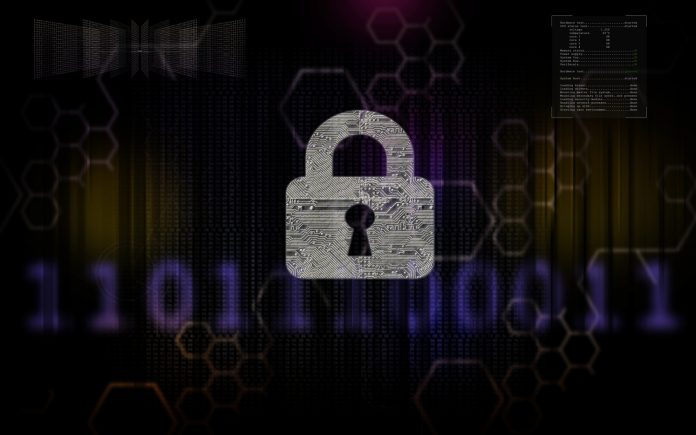Cy-Phy could become the next wave of technology and increase cyber security for better business practices, here Phil Quade, CISO, Fortinet highlights why we should begin preparing now
Over the last couple of decades, cyber technology has been progressively moving from the business or home office to closer proximity and direct interaction with our personal lives. Wearable devices now remind us to stand, move, and relax. Cars monitor road conditions, stay in the correct lane, and can even automatically brake if we aren’t paying attention. Lighting, appliances, or heating and air conditioning systems in our homes are now able to respond to voice commands.
We’re entering a new era that can be referred to as the age of Cy-Phy. This an age epitomised by the merging of cyber space with a plethora of devices and data in our physical spaces. With Cy-Phy systems, new technologies designed to understand our homes and our bodies are becoming deeply intertwined with more traditional cyber security systems and data.
Cy-Phy will change our professional and social lives
Cy-Phy utilises new technologies – such as 5G, IoT and AI to essentially change how we interact with our surroundings. In recent years we have seen several pieces of technology reach maturity, which is making Cy-Phy possible.
Advancements in 5G technology mean faster speeds, lower latency, and highly reliable connections. These will enable greater edge-based computing without the need for nearby datacentres to support latency-sensitive transactions and workflows. In practical terms, this means that connected devices will be able to rapidly communicate and process data, allowing them to more closely support everyday actions in our lives.
At the same time, the proliferation of the Internet of Things (IoT) within our everyday life is creating new opportunities to gather data. By combining connected devices with automated systems it is possible to collate information, analyse it and create a solution to help someone with a particular task, or learn from a process. IoT devices will be enlisted to track other devices and users, monitor inventory, gather user and device information, and provide real-time data that can impact everything from agile application development and manufacturing floors to managing and coordinating resources in highly connected environments such as smart cities.
To give an example: When a medical emergency occurs, the nearest health provider could be automatically alerted. Lifesaving data collected from a wearable device or medical implant would be automatically linked to the patient’s comprehensive medical history and sent to physical and virtual caregivers.
Through the wearable devices, medical emergencies could be detected and ambulances could be simultaneously dispatched before an emergency call could even be made, while an automated AI-based medical system would be able to make an assessment and formulate a precise response while caregivers are still enroute.
We have already begun to see the smallest hints of this future in consumer-grade, connected wearables, such as universal health monitoring devices. Cy-Phy takes it much further. Microchips in vehicles, clothing, or even physically embedded in your body would potentially simplify multiple activities of daily life —from purchasing goods, accessing transportation, identification, or accessing restricted locations, resources, services, or devices.
Notably, in Sweden people have had microchips embedded within their hands that simplify many of the activities of daily life, including accessing their home or workplace, boarding a train and, soon potentially making contactless payments.
Finally, artificial intelligence (AI) is rapidly improving at performing tasks normally requiring human intervention, such as speech recognition, translation between languages, decision making and visual perception. In the near future new technologies being woven into our businesses, homes and cars will not be limited to responding to our needs (adjusting the temperature or lights) but will ultimately begin to anticipate them. We have barely scratched the surface of what we can achieve with Cy-Phy.
The possibilities are endless as we start to gather, collate and analyse data related to integrated sensing and analysis in near real-time including shape, colour, weight, brightness; smell; temperature; size; speed and vector; loudness; and altitude and proximity. As we create a constant state of integration with this data, the benefits will be ground-breaking.
Improvements in three major areas will be offered by Cy-Phy innovations: Increased efficiency for commercial companies, unprecedented convenience for consumers and extended safety for industrial applications. This promises to usher in automation in homes and commercial buildings, enable the realisation of long-envisioned smart cities, and revolutionise critical services such as healthcare.
Extending Cy-Phy to cyber security
Integrating physical sensors and networks will enable cyber security systems to monitor behaviours over time. When paired with behavioural analytics, security systems can better detect anomalies, cyber security weaknesses, and even predict security issues that might otherwise fall through the cracks. This sort of integrated system will also enhance a cyber security system’s ability to respond to threats at speed and scale without human intervention.
However, Cy-Phy is likely to also create extra security headaches that organisations need to be aware of and begin to prepare for now. Moreover, as the number of connected devices and data volume accelerates, the likelihood of information overload increases. More connected devices and larger volumes of data in turn increase the complexity of networks and creates greater cyber-risk. Therefore, new security systems and practices – including automation, AI and behavioural analytics – will be needed to protect your business.
Cy-Phy will create multifaceted, interconnected environments which may add further complexity in cyber security. Additional data protection measures must follow due to the growing number of IoT devices moving into and out of corporate networks, especially at the new network edges.
Thus, as organisations expand their multi-cloud strategy and deploy more IoT devices, cyber attack surfaces will grow. For example, the proliferation of IoT devices decentralised from a central network increases the cyber attack surface due to the risk of intruders being able to move laterally within the organisation once they gain access.
In addition, access control will become more challenging as the number of edges increase and points of entry continue to grow. Therefore, businesses will need to use behavioural analytics to spot unusual network activity, use access control to segment different types of devices, have automated policies to quickly remediate issues and use AI and the latest threat intelligence to recognise attack patterns.
Prepare now
To start preparing today, organisations need to develop security strategies designed around principles of adaptability, speed, integration and automation in order to begin preparing for the future.











